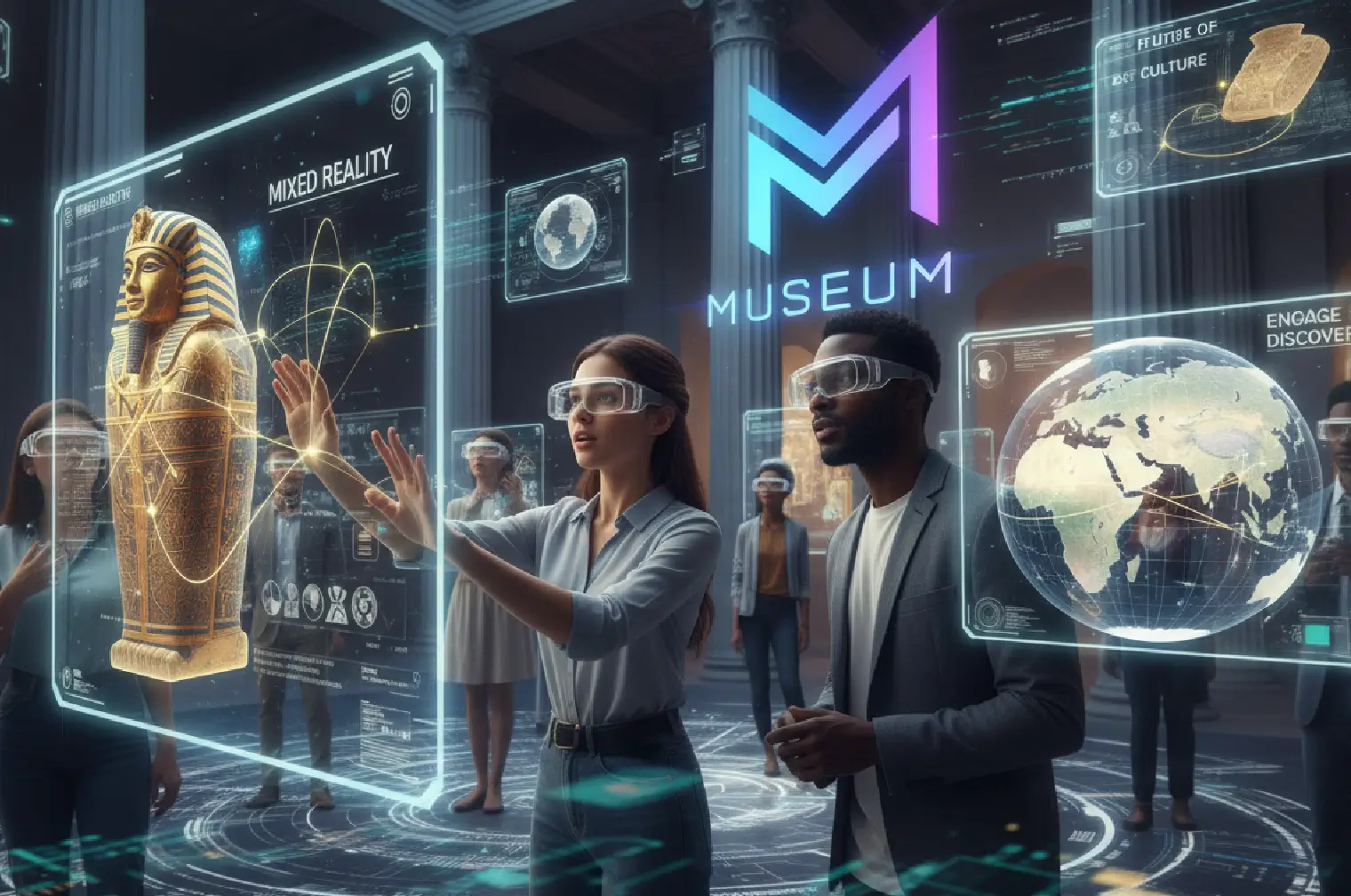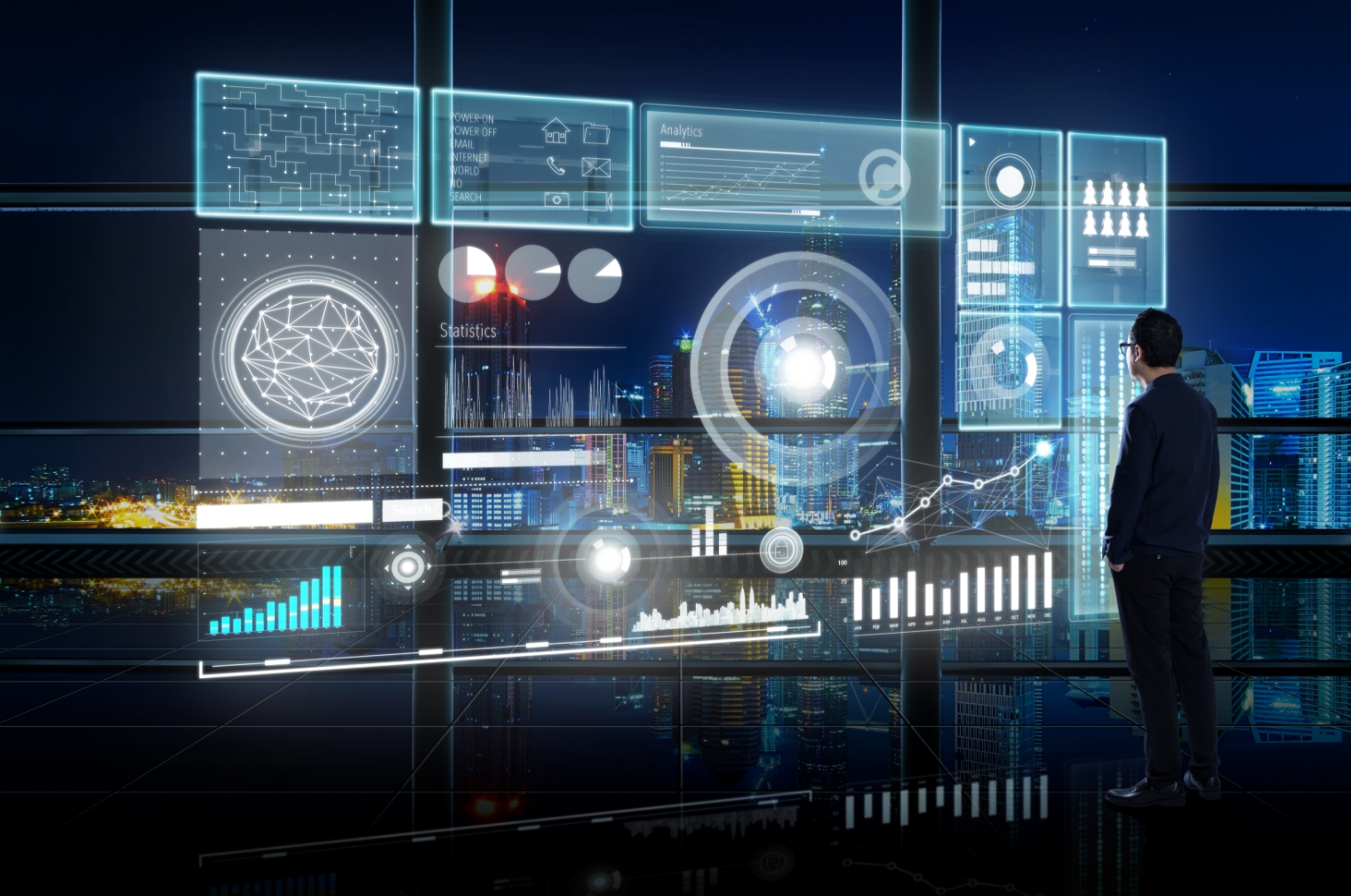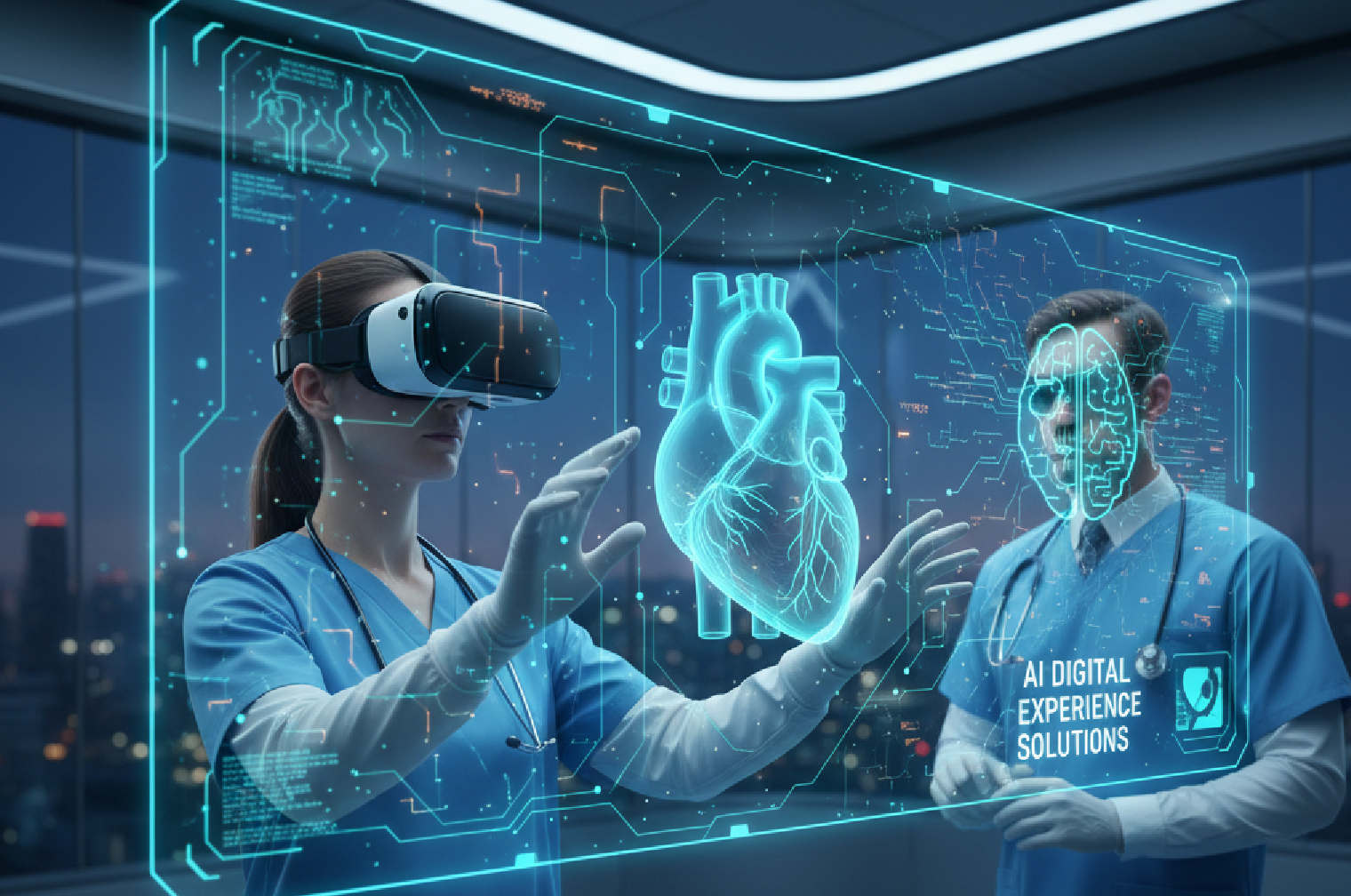Machine Learning and AI for revolution of Tech Companies are changing and streamlining businesses.
Immersive experience centers and digital experience platforms are reshaping how museums attract, educate, and retain visitors in a world where cultural consumption is increasingly hybrid, personalized, and data-informed. As visitor expectations shift toward interactive, multi-sensory, and on-demand content, mixed reality in museums has moved from experiment to essential strategy for sustained relevance and growth.
The Digital Age is Changing Everything
Museums today compete not just with parallel institutions but with a vast universe of digital media that has trained audiences to expect interactivity, immersion, and continuity between physical and virtual experiences.
ICOM’s multi-year analysis shows museums are accelerating digital investment and rethinking digital strategy, training, and content to meet these expectations, making immersive museum experiences and XR experiences in cultural heritage central to future-readiness.
UNESCO underscores that digital technologies—from 3D modeling to online platforms—are now fundamental to how culture is accessed, safeguarded, and scaled, reinforcing the need for immersive storytelling in museums that transcends location and time.
Why Static Exhibits No Longer Suffice
Pandemic-era disruptions catalyzed lasting shifts toward virtual museum experiences for visitors, with institutions rapidly amplifying online collections, interactive programming, and immersive digital exhibitions to reach remote and blended audiences.
These changes recalibrated baseline expectations: visitors now anticipate interactive layers, personalized guidance, and digital continuity before, during, and after an on-site visit, which traditional exhibits alone cannot consistently deliver.
What Immersive Experience Centers Are
An immersive experience center combines physical galleries with augmented reality, virtual reality, mixed reality, and broader XR modalities to create layered narratives that visitors can navigate and influence in real time.
By merging spatial computing, 3D visualization, and responsive content, these environments elevate collections with digital storytelling that reveals provenance, technique, and context in ways that static labels cannot replicate.
The Louvre’s “Mona Lisa: Beyond the Glass” exemplifies how virtual reality in museums can offer close, research-informed exploration of masterpieces, extending access on-site and through home VR platforms for global audiences.
Reimagine Visitor Engagement with Immersive Experience Centers
Bring stories to life through interactive environments and digital experience platforms that redefine how audiences connect with culture.
Digital Experience Platforms as the Backbone
Digital experience platforms act as the operational core that orchestrates content, personalization, and analytics across touchpoints, ensuring that immersive museum experiences are scalable, maintainable, and measurable.
Research on museum digital transformation highlights the necessity of aligning people, technology, process, customer experience, and strategy into a coherent digital readiness framework—exactly the domain where digital experience platforms for cultural institutions create leverage.
As AI becomes integral to cultural heritage technology and governance, platforms that unify content, XR assets, and audience data will enable privacy-conscious personalization and continuous improvement.
How DXPs Empower Immersive Journeys
A mature platform enables centralized content delivery to in-gallery devices, visitor apps, and virtual heritage tours, reducing duplication while enabling tailored narratives by audience segment, language, and accessibility needs.
Analytics capture engagement across channels—dwell time, interaction patterns, and learning outcomes—allowing curators and educators to refine immersive storytelling in museums based on evidence rather than intuition.
With robust APIs, a platform can integrate AR toolkits and VR engines to synchronize physical installations with digital layers, creating cohesive mixed reality in museums without fragmenting operations.
Global Use Cases and Examples
- Louvre: Mona Lisa—Beyond the Glass, the museum’s first VR experience, offered a rare, research-driven, up-close encounter with the painting and extended access via home VR platforms.
- Smithsonian: Skin and Bones app animated historic skeletons with AR overlays, adding motion, anatomy insights, and scientist-led interpretation in the Bone Hall.
- The Met: The Met Unframed provided interactive virtual galleries with AR “take-home” art, expanding global reach during restricted access periods.
- Virtual heritage: High-fidelity 3D scans and LiDAR-powered reconstructions enable immersive tours of heritage sites, advancing education, conservation planning, and open access.
Transform Museums with Digital Experience Platforms
Integrate mixed reality and immersive technologies to create unforgettable, data-driven experiences for modern visitors.
ViitorCloud’s Museum Transformations
ViitorCloud supports cultural institutions with immersive storytelling, AI-enabled search, and DXP-led orchestration to unite physical and digital narratives into measurable visitor journeys. At the Museum of Art and Photography (MAP), ViitorCloud delivered an interactive “Lighting of a Lamp” inauguration experience where visitors lit virtual diyas via mobile devices, synchronized to a 92-inch LED installation with real-time data capture and engagement analytics.
The team also created a launcher for immersive digital exhibitions and seamless access to core museum web content via large-format interactive screens to deepen engagement and discovery.
Beyond in-gallery activation, ViitorCloud applies AI-driven retrieval and pattern exploration to help visitors and educators surface thematic links across collections through intuitive, visual interfaces.
For institutions pursuing fully digital outreach, ViitorCloud’s Digital Sikh History Museum showcases an immersive repository model that scales global access to artifacts, stories, and learning pathways. These implementations demonstrate how a unified content backbone, interactive front-ends, and analytics can transform curation into living, adaptive storytelling at scale.
Benefits for Museum Directors and Partners
Immersive museum experiences increase dwell time, repeat visitation, and learning outcomes by pairing narrative depth with interaction and multi-sensory cues. Digital experience platforms unlock new revenue models—such as virtual access, premium timed content, and digitally augmented memberships—through connected ecommerce and content delivery. Accessibility improves for remote, neurodiverse, and mobility-limited audiences through adaptable interfaces, multilingual content, and persistent virtual programs.
Quick comparison
| Aspect | Traditional exhibits | Immersive experience centers |
| Engagement | Passive viewing limits depth and personalization | Active, participatory journeys with dynamic content |
| Access | On-site only with schedule constraints | On-site and remote, synchronous and on-demand |
| Data & insight | Limited visitor analytics | Cross-channel analytics inform content and operations |
| Scalability | Costly to update and replicate | Content is modular, reusable, and distributable |
A Practical Roadmap to Begin
Start with a rapid digital readiness assessment across people, technology, process, customer experience, and strategy to surface gaps in content, skills, and infrastructure. Prioritize one or two high-impact pilots—such as an AR layer for a signature gallery or a VR experience tied to a blockbuster exhibition—paired with clear evaluation metrics for engagement and learning. Invest in a scalable digital experience platform and content governance model so that assets, metadata, and translations can be reused across virtual heritage tours, mobile apps, and in-gallery devices.
Build staff capability through targeted training and partnerships, reflecting ICOM’s evidence that training and digital offer expansion correlate with momentum in transformation. Leverage NEMO’s recommendations and sector exemplars to inform audience-centered design and post-visit continuity, ensuring immersive museum experiences extend well beyond the gallery. Finally, collaborate with cultural technologists who bring both technical depth and heritage sensitivity, as demonstrated in ViitorCloud’s projects that align storytelling, UX, and analytics with institutional goals.
Build the Future of Exhibitions with Immersive Experience Centers
Combine creativity and technology to design digital experience platforms that keep your museum relevant and engaging in the modern era.
Why Now and Why ViitorCloud
Adopting immersive experience centers and digital experience platforms is the most reliable path to future-proof visitor engagement, storytelling, and operations, as evidenced by global leaders like the Louvre and the Smithsonian and by sector analyses from ICOM, UNESCO, and NEMO. The institutions that will lead the next decade will integrate AR, VR, MR, and AI within governed platforms, turning collections into living, adaptive narratives accessible to global audiences.
ViitorCloud’s museum work—from AI-powered discovery at MAP to culturally resonant mixed reality ceremonies and platform-aligned exhibition management—shows how to move from isolated proof-of-concept to scalable, measurable transformation. Contact our team of digital experience experts at [email protected] and book a complimentary consultation.









